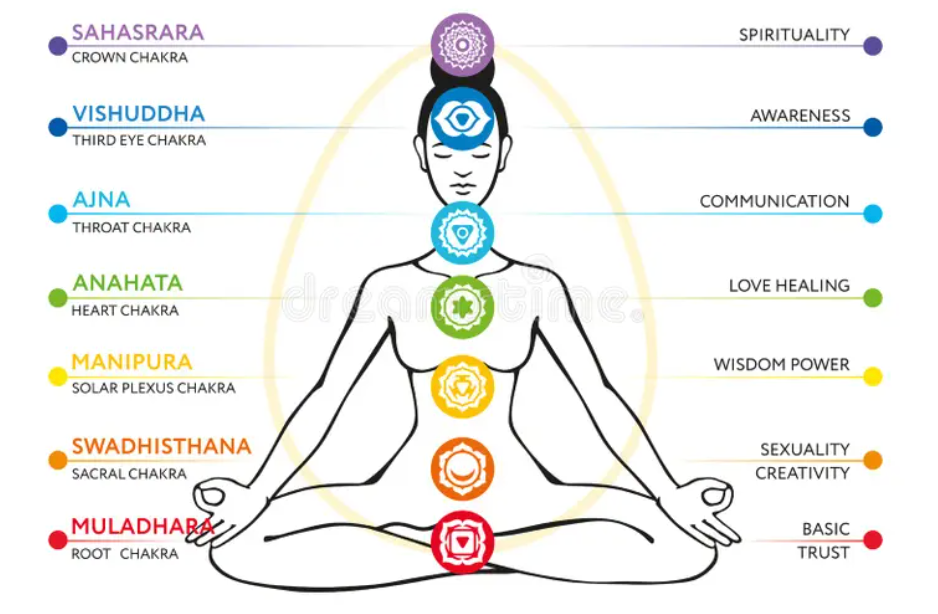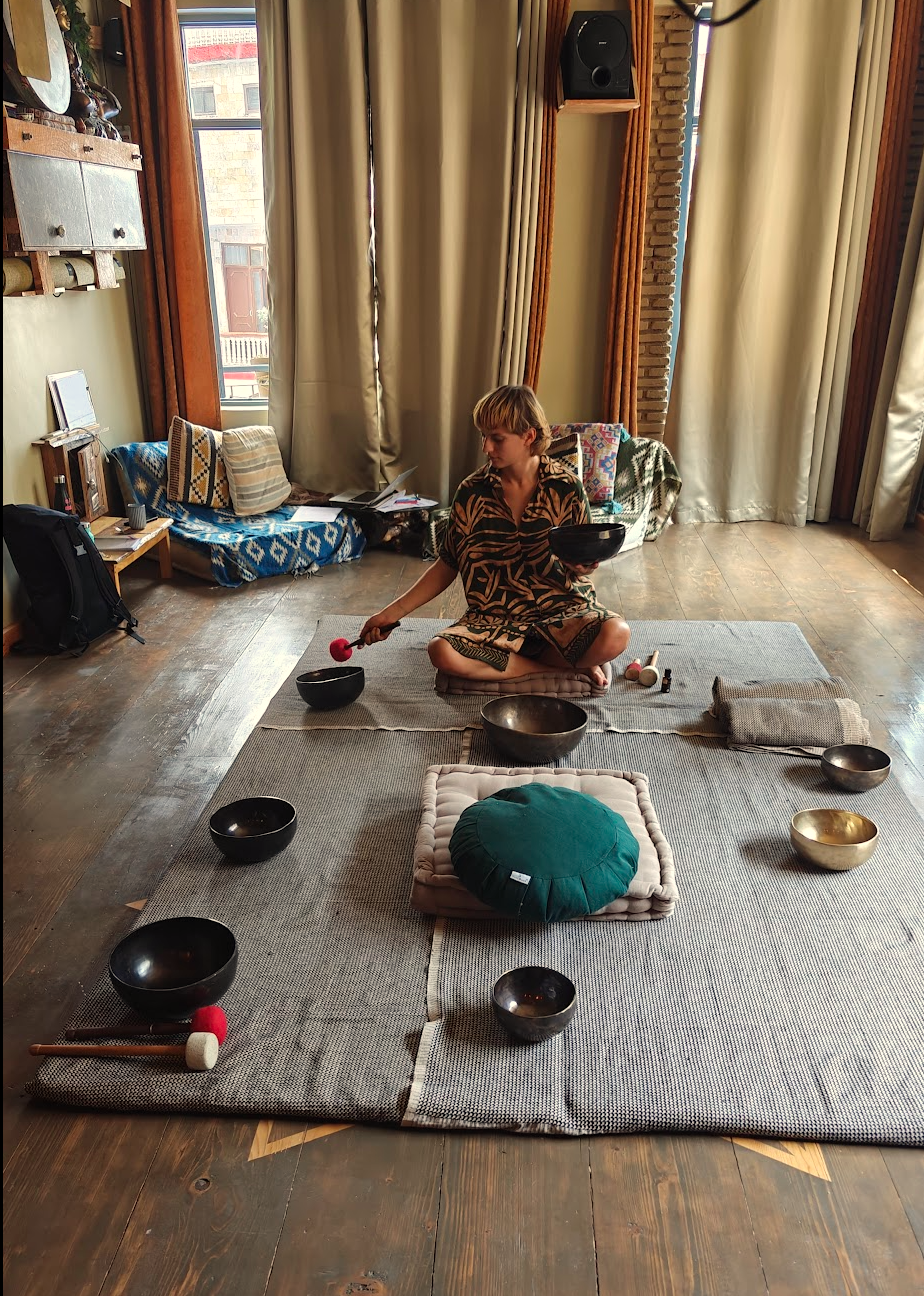DeepDive into Body Tuning with Vibration

— Nikola Tesla
We live in a world of noise—but not all sound is noise. Some vibrations move through us like medicine. Reciently, I’ve been immersing myself in the world of frequency and vibrational therapy—not just as a practice, but as a way of listening more deeply to the body. In this piece, I share how sound interacts with our nervous system, our energy centers, and our emotional landscapes—and why I believe it's an essential companion to somatic work. Whether you’re a seeker, body work practitioner, or simply curious about what it means to feel more in tune, I invite you into this exploration with me.
🎶 What Is Vibrational Therapy?
Vibrational therapy is based on a simple, powerful idea: everything in the body has a frequency. Every cell, organ, and tissue vibrates at a specific rhythm. When we’re in a regulated, grounded state, these rhythms are in harmony. But emotional stress, trauma, chronic tension, or disconnection from the body can create subtle dissonance—states where things feel “off,” even if we can’t explain why.
Vibrational therapy uses sound and frequency to support the body in returning to its natural state of coherence. This can include tools like tuning forks, singing bowls, chimes, gongs, or even the human voice. The intention isn’t to “fix” the body, but to offer resonance—a safe, rhythmic environment that invites the system back into alignment.
When integrated with somatic therapy or body-based awareness practices, sound becomes a powerful ally in emotional regulation. It helps soften bracing, restore a felt sense of safety, and open space for integration. Vibrational input can bypass the analytical mind and speak directly to the nervous system—offering calm where words may not reach.
🔬 Scientific Support: Frequency & the Nervous System
While the language of energy and vibration may feel abstract, scientific research continues to affirm its effects on the body and brain:
1. Vibroacoustic Therapy and Stress Reduction
A study published in Frontiers in Psychology found that vibroacoustic therapy, which uses low-frequency sound vibrations, can significantly reduce acute stress responses. Participants who received vibroacoustic stimulation showed improvements in heart rate variability, indicating enhanced autonomic nervous system balance. Link
2. Tibetan Singing Bowl Meditation and Mood Enhancement
Research in the Journal of Evidence-Based Integrative Medicine demonstrated that an hour-long sound meditation using Tibetan singing bowls led to significant reductions in tension, anger, fatigue, and depressed mood among participants. The study suggests that sound meditation can be an effective tool for improving overall well-being. Link
3. Humming and Vagal Tone Improvement
A study published in the Journal of Clinical and Diagnostic Research found that humming practices, such as Bhramari Pranayama, can positively influence heart rate variability and reduce stress. The practice was associated with increased parasympathetic activity, indicating a calming effect on the nervous system. Link
4. Binaural Beats and Brainwave Entrainment
A systematic review in Frontiers in Human Neuroscience examined the effects of binaural beats on brainwave activity. The review found that binaural beats can influence brainwave patterns, potentially aiding in relaxation, focus, and anxiety reduction. Link
A 2016 study in The Journal of Evidence-Based Integrative Medicine found that participants in sound baths reported significantly reduced tension, anxiety, and fatigue—after just one session.
Sound & the Chakra System: Resonating with Subtle Energy
In many traditional healing systems, the body is seen not only as physical, but as energetic. One of the most widely recognized frameworks is the chakra system—seven primary energy centers aligned along the spine, each associated with specific organs, emotions, and psychological states.

Each chakra is said to resonate at its own frequency—its own vibrational tone. When these centers are in harmony, we feel grounded, creative, confident, connected, expressive, intuitive, and spiritually open. But like instruments, they can fall out of tune.
Sound and vibration offer a way to gently recalibrate these centers. Through practices like vocal toning, singing seed syllables (such as LAM, VAM, RAM, etc.), or receiving tuned frequencies, we can direct vibrational energy to support a specific area of the body.
These chakras are:
- Root (base of spine) – related to grounding, safety, and basic needs
- Sacral (lower belly) – connected to emotions, pleasure, and creativity
- Solar Plexus (upper belly) – center of willpower, self-esteem, and boundaries
- Heart (chest) – linked to love, compassion, and connection
- Throat (neck) – governs communication, truth, and self-expression
- Third Eye (forehead) – associated with intuition, clarity, and perception
- Crown (top of the head) – represents spiritual connection and inner knowing
Each chakra is believed to vibrate at a specific frequency, and when these frequencies are out of balance—due to stress, trauma, or life imbalances—we might feel blocked, disconnected, or emotionally overwhelmed.
What makes vibrational therapy so effective is that it can gently stimulate or soothe these energy centers through sound—without needing to intellectualize or analyze the issue. The body responds instinctively to frequency.
Sound Tools for Chakra Balancing
Tibetan singing bowls are commonly used to work with the chakras. Each bowl can be tuned to a note or tone associated with a specific center—for example, a low bowl may be used for the root chakra, while a higher-pitched bowl supports the crown. When the bowls are played on or near the body, the sound travels through skin, muscle, and even bone—helping to create resonance and shift internal states.

Tuning forks, especially when used directly on the body, offer a more focused vibrational input. Weighted forks placed on chakra points (or meridian lines) can release tension and encourage energy to flow. Unweighted forks can be used in the energy field to scan and harmonize more subtle imbalances.

What’s powerful about these tools is that they work with both the nervous system and the energy body. When used with care and intention, they can help regulate emotional states, clear mental fog, and deepen the connection between body and spirit. More information about subtle bodies here: Link
Working with the chakras through sound is not about fixing something that’s broken—it’s about listening, softening, and allowing. Sometimes, a sound touches a part of us that words cannot. And in that moment, something real shifts.What I find beautiful about vibrational work is that it meets the body where it is—without force. You don’t need to “understand” chakras intellectually to feel their shifts. Often, the body responds before the mind catches up. A tight chest softens. A lump in the throat clears. Tears rise without a known reason.
When sound enters the field with intention, the body listens. And more often than not—it responds.
Learning to Listen, Learning to Tune
I’m still actively exploring the world of frequency and sound. The more I learn, the more I realize how subtle yet powerful this work is. Vibrational therapy is not about doing more—but about tuning in more deeply. It teaches presence, resonance, and trust in the body’s ability to self-regulate when given the right environment.
As a somatic practitioner, I’m especially drawn to how sound and vibration can support emotional regulation, trauma integration, and nervous system balance. Sometimes, talking isn’t enough. Sometimes, the body needs to be met on its own terms—through sensation, rhythm, and felt experience. That’s where vibrational tools can be such beautiful companions to somatic work.
I’m excited to continue weaving these practices into my sessions—helping others come back into harmony with themselves. Not by fixing, but by listening. Not by effort, but by resonance.
Thank you for reading!
All the Love <3
Justina